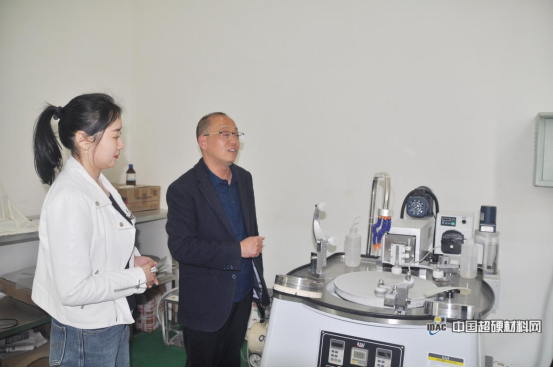摘要 作者:SaritaSingh,NitinShah,JyotiMandlik,ManojNair,ShailJaggi,KalpanaKanyal摘要:本論文研究了不同精磨、拋光工藝...
作者:Sarita Singh,Nitin Shah,Jyoti Mandlik,Manoj Nair,Shail Jaggi,Kalpana Kanyal
摘要:本論文研究了不同精磨、拋光工藝對(duì)兩種復(fù)合樹脂材料加工的表面粗糙度影響,以及表面密封劑的使用對(duì)精磨、拋光處理后的表面粗糙度的影響。利用定制的不銹鋼模具制備60個(gè)6×3mm(直徑×厚度)的復(fù)合片,每30個(gè)為一組;30個(gè)為納米填充復(fù)合材料(Z-350 3M EsPE),另外30個(gè)為微混合復(fù)合材料(Z-250 3M ESPE)。將兩組試樣再次隨機(jī)分為3個(gè)子組并對(duì)其進(jìn)行精磨、拋光加工。利用表面光度儀對(duì)所有試樣的平均表面粗糙度進(jìn)行測(cè)量。根據(jù)制造商的指導(dǎo)要求,對(duì)精磨、拋光后的試樣涂上密封劑,再次進(jìn)行表面粗糙度測(cè)量。利用ANOVA、配對(duì)/非配對(duì)試驗(yàn)對(duì)實(shí)驗(yàn)結(jié)果進(jìn)行統(tǒng)計(jì)分析。實(shí)驗(yàn)結(jié)果表明使用納米填充復(fù)合材料的精磨拋光系統(tǒng)加工出的表面比使用微混合復(fù)合材料所加工出的表面更光滑。
關(guān)鍵字:精磨,拋光,復(fù)合樹脂材料
引言:
修復(fù)處理后的美觀對(duì)于牙疾患者的心理健康影響和對(duì)身體健康的影響是等同重要的。近年來,隨著人們審美的不斷提高,牙醫(yī)方面對(duì)修復(fù)用復(fù)合材料的需求增加。材料表面質(zhì)量是決定復(fù)合材料修復(fù)處理的重要因素;而材料的表面粗糙度則影響著修復(fù)的褪色與否,并和精磨拋光加工系統(tǒng)以及所用的材料類型有密切關(guān)系。適當(dāng)?shù)木ズ蛼伖饪梢詫?shí)現(xiàn)高質(zhì)量的美觀修復(fù)并延長(zhǎng)修復(fù)的后續(xù)使用壽命。光滑的復(fù)合材料修復(fù)可以減少菌斑滯留、保持表面光澤并減少反復(fù)性腐爛。
新型復(fù)合材料(如微混合、納米填充)結(jié)合了雜化復(fù)合材料和微填充復(fù)合材料的特性,有效改善了材料的機(jī)械性能,半透明度更好,表面光潔度更高。利用不同設(shè)備對(duì)復(fù)合材料進(jìn)行精磨和拋光,去除樹脂的氧化層,留下更加粗糙的表面。針對(duì)不同材料的恢復(fù)選取適當(dāng)?shù)谋砻婢シ绞绞欠浅V匾摹1菊撐难芯苛瞬煌ァ伖夤に噷?duì)兩種復(fù)合樹脂材料加工的表面粗糙度影響,以及表面密封劑的使用對(duì)精磨、拋光處理后的表面粗糙度的影響。
材料和方法:
試樣制備
實(shí)驗(yàn)所用樹脂復(fù)合材料為A3品級(jí)的Z-350(納米填充)和Z-250(微混合)。使用Denstply牌的密封劑。三種精磨拋光系統(tǒng)分別為Shofu精磨拋光裝備、SOF-Lex復(fù)合精磨拋光裝備、Mylar Strips(Unident)。用不銹鋼模具制備60個(gè)光固化樹脂復(fù)合材料的圓塊,直徑6mm深度3mm。將不銹鋼模具置于玻璃調(diào)板上,待測(cè)試的復(fù)合材料嵌入每個(gè)圓塊腔體內(nèi),掃去多余的復(fù)合材料。在模具上用聚酯帶和載玻片密封好。利用石英-鎢鹵素?zé)魪膱A塊兩邊對(duì)材料進(jìn)行40秒的光固化。光源和模具中的材料之間的距離按照相關(guān)標(biāo)準(zhǔn)進(jìn)行校準(zhǔn)。最終制備出60個(gè)復(fù)合片。將所有試樣放在37℃的盛有蒸餾水的培養(yǎng)皿中24小時(shí)。
精磨拋光實(shí)驗(yàn)步驟、密封劑的使用和表面粗糙度的測(cè)量
每種復(fù)合樹脂的30個(gè)樣品隨機(jī)分成3個(gè)子組(n=10);分別用Shofu、SOF-Lex和Mylar系統(tǒng)對(duì)試樣分別進(jìn)行精磨拋光加工。使用Shofu、SOF-Lex系統(tǒng)進(jìn)行加工的兩種材料,用金剛石精修鉆以旋轉(zhuǎn)運(yùn)動(dòng)進(jìn)行15秒的表面磨削,冷卻液為水;以此來模擬修復(fù)材料的初始精磨。使用Mylar加工系統(tǒng)的材料在光固化后不再進(jìn)行精磨和拋光。利用表面光度儀對(duì)所有試樣的表面粗糙度進(jìn)行測(cè)量。
然后,進(jìn)一步研究表面密封劑對(duì)試樣表面結(jié)構(gòu)的影響,將Denstply牌的密封劑涂在所有精磨拋光后的試樣上,再次進(jìn)行表面粗糙度測(cè)量;利用ANOVA F和配對(duì)/非配對(duì)試驗(yàn)對(duì)得到的結(jié)果進(jìn)行統(tǒng)計(jì)分析。
實(shí)驗(yàn)結(jié)果
實(shí)驗(yàn)結(jié)果顯示,Mylar組的試樣表面結(jié)構(gòu)最光滑,Sof-Lex系統(tǒng)加工出的材料比Shofu系統(tǒng)加工出的要好。使用密封劑后的材料表面結(jié)構(gòu)得到了極大的改善。不考慮精磨拋光加工,也不考慮是否使用密封劑,納米填充復(fù)合材料的表面粗糙度值比微混合復(fù)合材料的表面粗糙度值要低(如表1、2、3所示)。
表一:納米填充復(fù)合材料的表面粗糙度值對(duì)比(使用三種加工系統(tǒng);使用密封劑前后)

表二:微混合復(fù)合材料的表面粗糙度值對(duì)比(使用三種加工系統(tǒng);使用密封劑前后)

表三:材料表面粗糙度的對(duì)比

結(jié)論:
利用三種精磨拋光加工系統(tǒng)的兩種復(fù)合材料的表面粗糙度值雖然沒有統(tǒng)計(jì)上的顯著差異,但Mylar組的表面最光滑,其次是Sof-Lex組。Shofu組的表面粗糙度值最大。微混合材料和納米填充材料相比,納米填充復(fù)合樹脂的表面結(jié)構(gòu)在三種精磨拋光加工下都較好。此外,在精磨拋光加工后,使用密封劑則顯著改善了兩種材料的表面結(jié)構(gòu)。
參考文獻(xiàn)
[1] Gupta R, Parkash H, Shah N, Jain V. [2005]A spectrophotometric evaluation of color changes of various tooth colored veneering materials after exposure to commonly consumed beverages. JIPS 5(2): 72−78. s
[2] Uctasli MB, Arisu HD, Omurlu H, Eliguzeloglu E, Ozcan S, Ergun G. [2007]The effect of different finishing polishing systems on the surface roughness of different composite restorative materials. J Contemp Dent Pract 1;8 (2):89−96.
[3] LS Turkun, M Turkun. [2004] The effect of one-step polishing system on the surface roughness of three esthetic resin composite materials. Operative Dentistry, 29(2):203−211.
[4] E Ruyter. [1988]Composites - characterization of composite filling materials: reactor response. Adv Dent Res 2(1):122−129.
[5] Nuray Attar. [2007] The effect of finishing polishing procedures on the surface roughness of composite resin materials. The Journal of Contemporary Practice 8( 1).
[6] Steven R Jefferies. [2007]Abrasive finishing polishing in restorative dentistry: a state-of-the-art review. Dent Clin N Am 51:379−397
[7] Reis AF, Giannini M, Lovadino JR, dos Santos Dias CT. [2002] The effect of six polishing systems on the surface roughness of two packable resin-based composites. Am J Dent 15: 193−197.
[8] Y Korkmaz, E Ozel, N Attar, G Aksoy. [2008]The influence of one-step polishing systems on the surface roughness microhardness of nanocomposites. Operative Dentistry 33(1): 44−50.
[9] AJ St- Georges, M Bolla, D Fortin. [2005]Surface finish produced on three resin composites by new polishing systems. Operative Dentistry 30(5): 593−597.
[10] AUJ Yap, JJ Ng, SH Yap, CK Teo. [2004]Surface finish of resin-modified highly viscous glass ionomer cements produced by new one-step systems. Operative Dentistry 29(1): 87−91.
[11] CYG Takeuchi, VH Orbegoso Flores, RG Palma Dibb, H Panzeri, EHG Lara, W Dinelli. [2003]Assessing the surface roughness of a posterior resin composite: Effect of surface sealing. Operative Dentistry 28(3): 283−288.
[12] M Jung, K Eichelberger J Klimek. [2007]Surface geometry of four nanofilled one composite after one-step multiple-step polishing. Operative Dentistry 32(4): 347−355.
[1] Gupta R, Parkash H, Shah N, Jain V. [2005]A spectrophotometric evaluation of color changes of various tooth colored veneering materials after exposure to commonly consumed beverages. JIPS 5(2): 72−78. s
[2] Uctasli MB, Arisu HD, Omurlu H, Eliguzeloglu E, Ozcan S, Ergun G. [2007]The effect of different finishing polishing systems on the surface roughness of different composite restorative materials. J Contemp Dent Pract 1;8 (2):89−96.
[3] LS Turkun, M Turkun. [2004] The effect of one-step polishing system on the surface roughness of three esthetic resin composite materials. Operative Dentistry, 29(2):203−211.
[4] E Ruyter. [1988]Composites - characterization of composite filling materials: reactor response. Adv Dent Res 2(1):122−129.
[5] Nuray Attar. [2007] The effect of finishing polishing procedures on the surface roughness of composite resin materials. The Journal of Contemporary Practice 8( 1).
[6] Steven R Jefferies. [2007]Abrasive finishing polishing in restorative dentistry: a state-of-the-art review. Dent Clin N Am 51:379−397
[7] Reis AF, Giannini M, Lovadino JR, dos Santos Dias CT. [2002] The effect of six polishing systems on the surface roughness of two packable resin-based composites. Am J Dent 15: 193−197.
[8] Y Korkmaz, E Ozel, N Attar, G Aksoy. [2008]The influence of one-step polishing systems on the surface roughness microhardness of nanocomposites. Operative Dentistry 33(1): 44−50.
[9] AJ St- Georges, M Bolla, D Fortin. [2005]Surface finish produced on three resin composites by new polishing systems. Operative Dentistry 30(5): 593−597.
[10] AUJ Yap, JJ Ng, SH Yap, CK Teo. [2004]Surface finish of resin-modified highly viscous glass ionomer cements produced by new one-step systems. Operative Dentistry 29(1): 87−91.
[11] CYG Takeuchi, VH Orbegoso Flores, RG Palma Dibb, H Panzeri, EHG Lara, W Dinelli. [2003]Assessing the surface roughness of a posterior resin composite: Effect of surface sealing. Operative Dentistry 28(3): 283−288.
[12] M Jung, K Eichelberger J Klimek. [2007]Surface geometry of four nanofilled one composite after one-step multiple-step polishing. Operative Dentistry 32(4): 347−355.


 手機(jī)資訊
手機(jī)資訊 官方微信
官方微信








 豫公網(wǎng)安備41019702003604號(hào)
豫公網(wǎng)安備41019702003604號(hào)